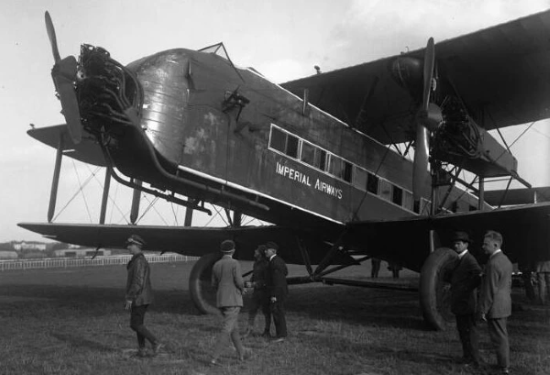
Civil Aviation developed rapidly after the First World War.
In March 1924, the government set up Imperial Airways to carry passengers and mail throughout the British Empire.
New routes were established linking England with South Africa, India, Australia, New Zealand and Hong Kong. Short-range planes made the journey in stages, flying to airports spaced out along the route.
Aircraft manufacturers were asked to build bigger more powerful planes. In 1925, John designed the Argosy a three-engined biplane big enough to carry 20 passengers. Imperial Airways ordered seven Argosys which flew from Croydon to Basle Brussels and Cologne.
An airmail service opened between England and India in 1929 and Imperial Airways asked Armstrong Whitworth to build a four-engined monoplane capable of carrying passengers and mail.
John designed the Atalanta, a commercial transport plane with a range of 540 miles that could carry 17 passengers. The Atalanta made its first flight on 6 June 1932 and appeared at the Hendon Air Display three weeks later. Imperial Airways bought eight aircraft, and the first went into service on 26 September.
The company assigned four Atalantas to its base in South Africa. The other four were sent to India, flying from Karachi to Calcutta, Rangoon and Singapore.
During the 1930s, three Atalantas crashed, and in 1939, the remaining aircraft were transferred to British Overseas Airways. They were requisitioned by the Royal Air Force in 1941 and given to the Indian Air Force, which used them for coastal reconnaissance.
End of Part Two
This post is taken from a series of articles about John Lloyd written by Betty Martin when she was researching Aviation History. Copyright: North Staffordshire Heritage 2024.
Photograph of the Argosy from Bundesarchiv, Bild 102-00921A / CC-BY-SA 3.0. Imperial Airways’ Advertisement is in the Public Domain.